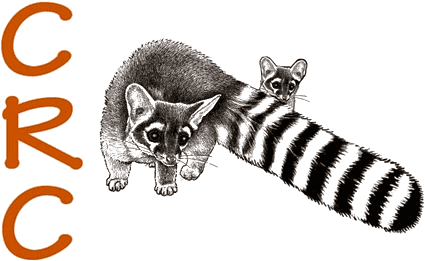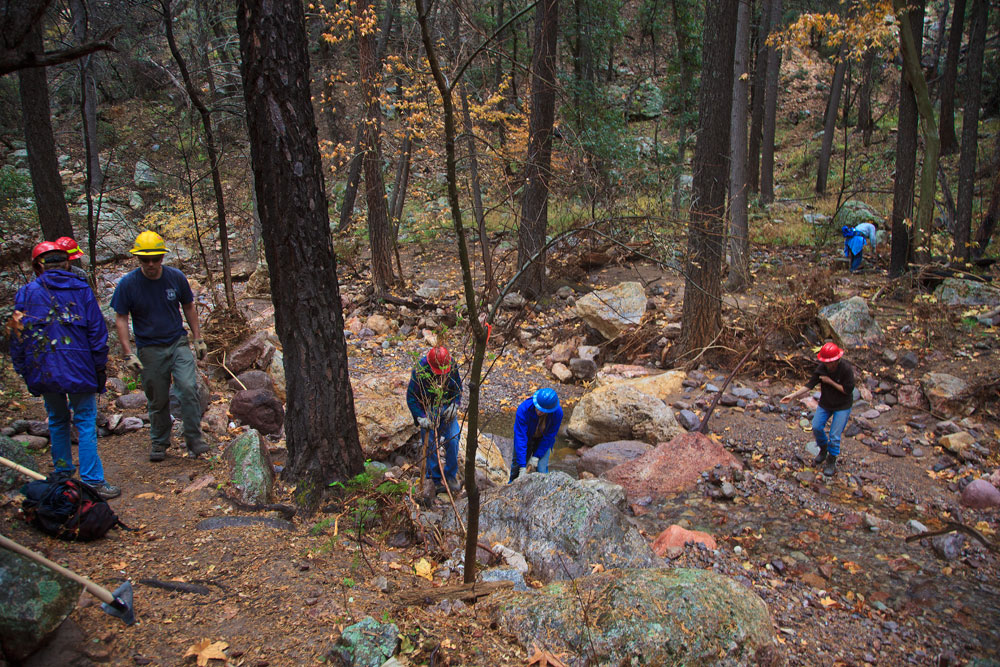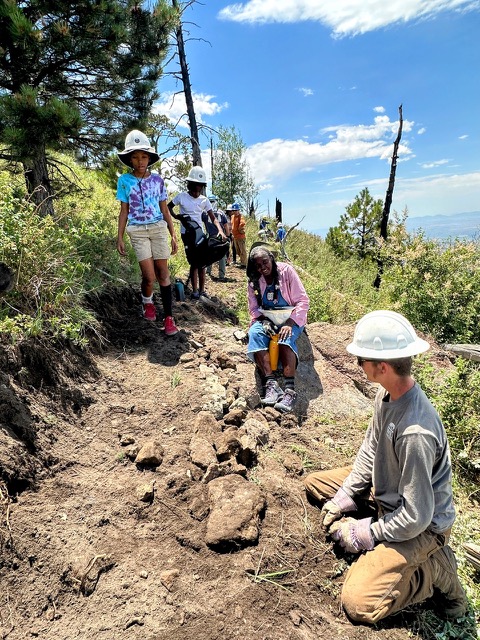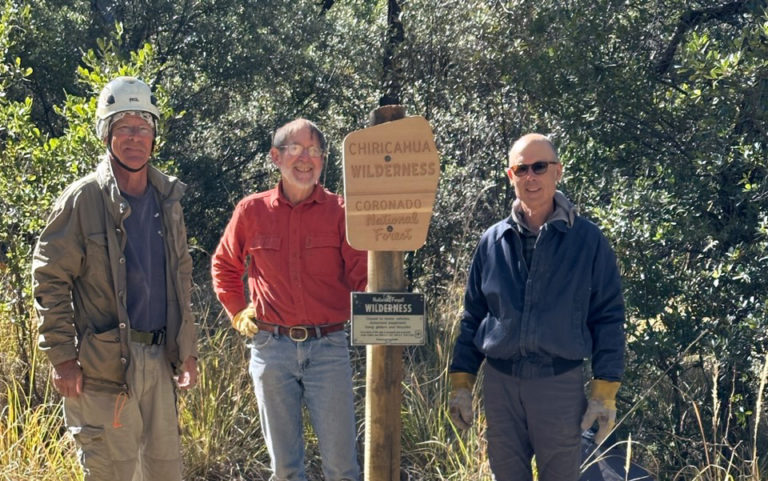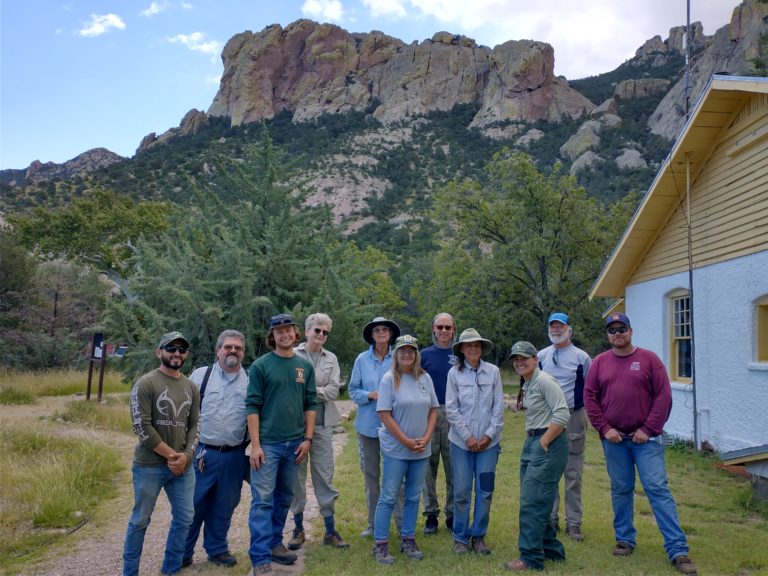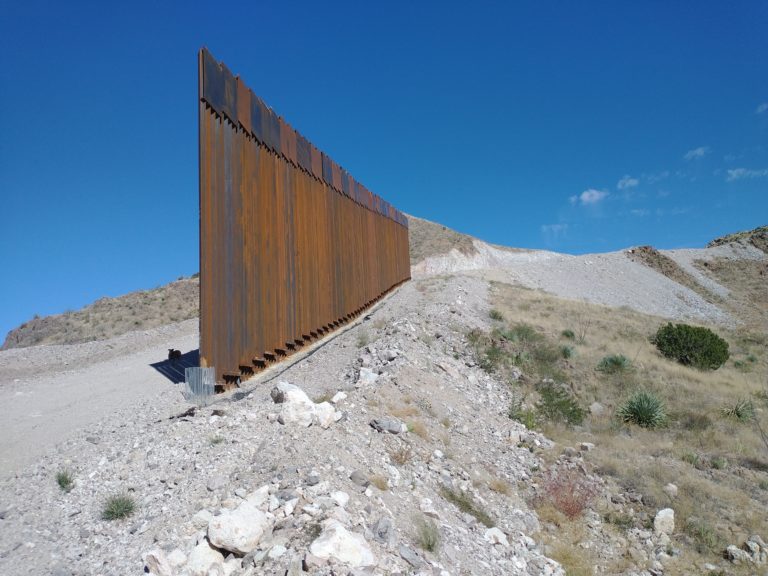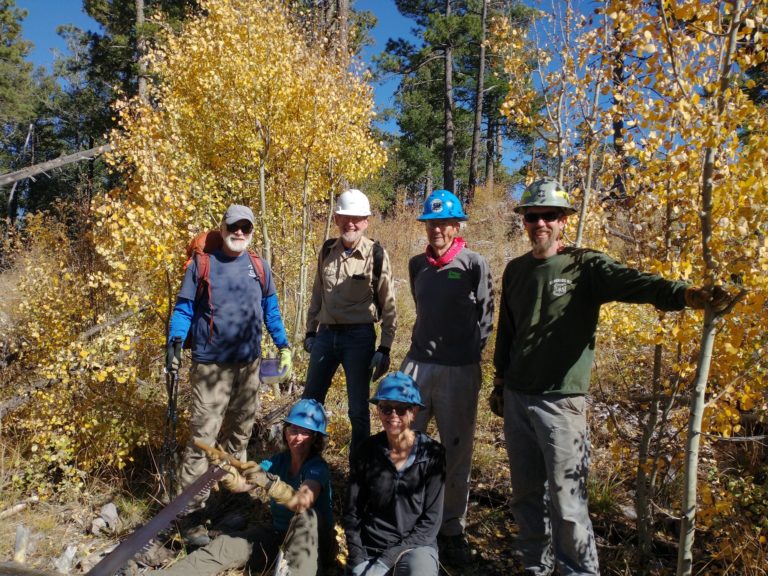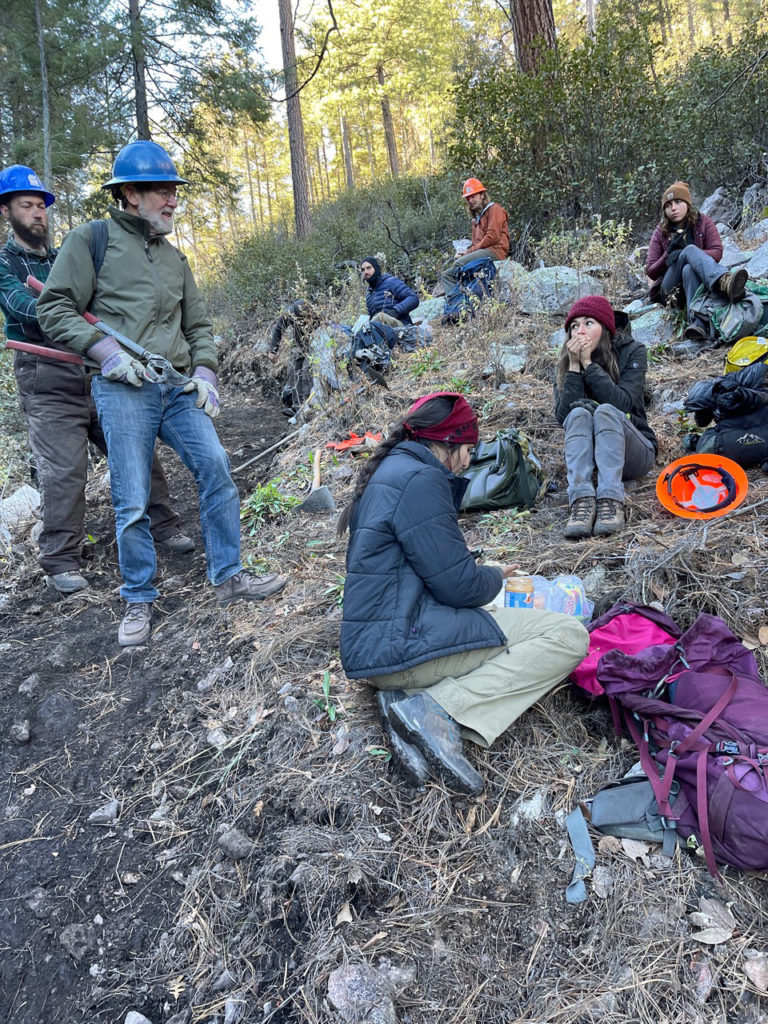Chiricahua Trail System Renovation
A lot of effort has been poured into restoring the trails in the Chiricahuas over the past quarter century. But the assaults of weather and fire, coupled with funding limitations imposed by a federal government that has de-prioritized trail maintenance nationally, have resulted in a trail system that struggles to remain safe and accessible. Every year we see the deterioration of more miles affected by erosion, overgrowth of brush and fallen timber. I used to think that by sheer will (and a lot of sweat) we volunteers could prevail in this struggle. But it seems clear to me now that we are losing the battle. We had the South Fork Trail in shape from bottom to top only months before Hurricane Odile blew it out. Last year we had cleared the Greenhouse Trail up to the Crest only to find it covered in logs over the winter. Both of these trails remain in terrible shape. And that’s just the tip of the iceberg. It is the nature of the conditions we’re up against to have these setbacks. But what are some of the solutions to keeping the trail system in shape? The following is a list of suggestions to engage more help in this effort.
- Fund conservation corps crews (Wild Arizona, Arizona Conservation Corps, American Conservation Experience, etc.) to work on key trail projects, especially big tread restoration. Local volunteers can prepare trail corridors with brushing and deadfall removal, then paid crews could follow with treadwork. In partnership with the Forest Service and local volunteers, project locations could be identified and crews could be supervised. Volunteer time could provide match for certain grants to fund crews.
- Create a short summer program with local middle/high school students to work on trails. Separate from the FS YCC program, this program could be introductory rather than a residential program, focusing more on basic skills and day trips, with the potential for participants to then apply for a YCC position later.
- Develop a seasonal volunteer trail crew using volunteer.gov and other platforms to recruit people who are provided several months of camping/parking for a trailer and perhaps per diem for food in exchange for working on trails 3 to 4 days a week under the supervision of FS staff and local volunteers––similar to camp host and VIC host positions, but targeting those who want to get out and work in the field with a mix of day and backpacking trail maintenance projects. With lots of people retiring in RVs, as well as those in early retirement or living out of vehicles or campers, a large pool of able bodied people may interested in participating in this program.
- Create a sign database/inventory and identify trail signs to be replaced or created, either by FS and installed by local volunteers, or created locally by volunteers.
- Fund spring maintenance and restoration across the trail system. Numerous established, developed springs in the Chiricahuas are relied upon heavily by recreational backpackers and trail crews, and some springs are falling into disrepair. Establish a database of these springs and their conditions, and identify what it would take to restore them.
- Create and install Trailhead registers to track usage and to aid in writing funding proposals.
- Strengthen the volunteer program by creating a list of competent volunteers from the region (signed up with the FS). Send out group emails to coordinate work trips.
- Develop partnering arrangements as outlined above with the FS, conservation organizations, private foundations and local volunteers on a project by project basis.
Conclusion
The Chiricahua Mountains have been a resource of great importance to the region, with recreational values well known to hikers, horsemen, hunters and backpackers. Today we see a change: use of the trails has been severely curtailed by fire, flood and deferred maintenance. This situation is reversible. By working together we can transform our trails into an exemplary system, restoring their importance to the region.
Dirk Sigler
